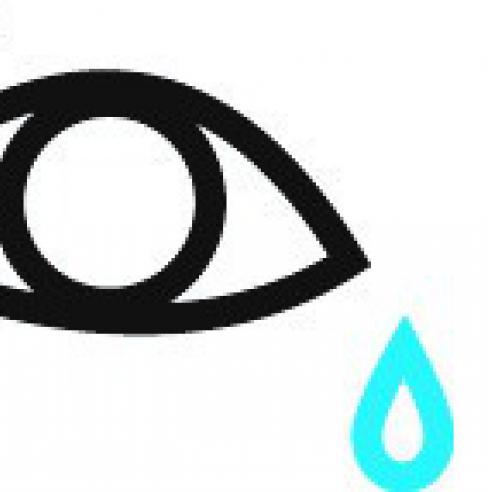RPB researchers are working to improve the management of dry eye. Our grants program covers every sight-threatening condition, including dry eye.
Dry Eye
Click one of the video selections to view.
Dry eye is a chronic medical condition that develops when the eye's tear film ceases to lubricate and protect the eye's outer surface. The condition is the result of diminished tear production, or because of a problem in the composition of the tear film.
According to researchers, increased salt concentration in the tears leads to problems with the eye surface and produces most dry eye symptoms. Patients may be able to find relief through the use of eye drops designed to restore proper tear film salt concentration or eye moisturizing drops and sprays. In more severe cases, when tear production is impaired, an inflammatory reaction may set in, further damaging cells on the surface of the eye and further suppressing tear production. Some of these patients may be able to improve tear gland function by using anti-inflammatory medicine.
Causes and risk factors
Dry eye can be caused by a variety of circumstances: contact lens use; smoking; exposure to hot, dry or windy climates; autoimmune diseases such as rheumatoid arthritis; thyroid conditions; menopause; increasing age; decreased blinking; the use of certain medications; and a dietary deficiency of omega-3 essential fatty acids. One of the biggest risk factors is Sjögren's syndrome, an autoimmune disease in which the white blood cells attack the body's own moisture-producing glands.
The tear film is complex. The first layer, produced by the conjunctiva, makes the corneal surface more adherent for the next layer. The middle layer is watery, and is produced by the lacrimal (tear) gland, which lies within the orbit on the outer portion of the upper eye. The third layer, secreted by the meibomian glands in the eyelid, prevents evaporation. An abnormality in any of the layers of the tear film can result in dry eye.
Symptoms
Dry eye symptoms include: sandy-gritty irritation or burning eyes; blurred vision that clears with blinking; and discomfort from reading, TV watching or computer use. Treatments range from altering the physical environment, to artificial tears, to dietary changes, to a procedure called punctal occlusion that retains tears on the surface of the eye, to drug therapy.
Dry eye reSOURCES
For up-to-date information on dry eye virtual events, videos and media coverage of dry eye, visit the Tear Film & Ocular Surface Society website.
Related News: Dry Eye

Understanding Corneal Injuries in Dry Eyes
An RPB grantee makes a key discovery involving genes that are essential for eye health.

July is Dry Eye Awareness Month
Dry eye, a global problem affecting more than 30 million people in the U.S. alone, occurs when the eye does not produce tears properly or when the tears are not of the correct consistency and evaporate too quickly.

Gender and Dry Eye
[Note: this is an older, but still potentially useful, article from the RPB archives.] David A. Sullivan, Ph.D. Associate Professor of Ophthalmology Schepens Eye Research Institute Harvard Medical School...
Subscribe
Get our email updates filled with the latest news from our researchers about preventing vision loss, treating eye disease and even restoring sight. Unsubscribe at any time. Under our privacy policy, we'll never share your contact information with a third party.
| General Info | Grants | News & Resources |



